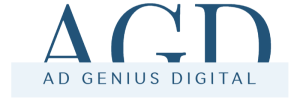To be competitive in the rapidly changing digital market, organizations need to keep ahead of the curve. Ad Digital Marketing has changed the game by enabling firms to reach their target consumers with accuracy, effectiveness, and quantifiable results. Your marketing success can be greatly impacted by your comprehension of the power of digital advertisements, regardless of the size of your company.

What Is Ad Digital Marketing?
Ad digital marketing refers to the use of online advertising strategies to promote products, services, or brands. These ads appear on various digital platforms, including search engines, social media, websites, and mobile apps. Unlike traditional advertising, digital ads offer precise audience targeting, real-time data analysis, and cost-effective solutions.
Types of Digital Ads
1. Search Engine Ads (PPC)
Also known as Pay-Per-Click (PPC) advertising, these ads appear on search engines like Google and Bing. Advertisers bid on keywords to ensure their ads appear when users search for related terms.
2. Social Media Ads
Platforms like Facebook, Instagram, LinkedIn, and TikTok provide businesses with highly targeted advertising options. Brands can reach users based on demographics, interests, and online behaviors.
3. Display Ads
These banner-style ads appear on websites and apps, capturing user attention with visuals and compelling messaging. Display ads often include images, GIFs, and even interactive content.
4. Video Ads
Video marketing is one of the most effective digital ad strategies. YouTube, Facebook, and Instagram Reels allow businesses to tell engaging brand stories through video content.
5. Native Ads
Native advertising blends seamlessly into content, making ads feel more natural and engaging. These ads match the look and feel of the platform where they are displayed unlike Ad Digital Marketing.
6. Retargeting Ads
Also called remarketing, these ads target users who have interacted with a website but didn’t complete a purchase. Retargeting increases conversion rates by reminding potential customers of the products they viewed.
7. Influencer Marketing Ads
Partnering with influencers allows brands to tap into a highly engaged audience. Influencer marketing ads use trusted personalities to promote products authentically.
Why Businesses Need Ad Digital Marketing
1. Enhanced Audience Targeting
With advanced analytics and data tracking, businesses can pinpoint their ideal audience. Digital ads can be customized based on location, age, gender, behavior, and even purchase history.
2. Cost-Effective Advertising
Compared to traditional marketing methods like TV or print ads, digital ads allow businesses to control their budgets and optimize spending for maximum returns.
3. Real-Time Performance Tracking
Digital marketing provides real-time insights into ad performance. Businesses can analyze clicks, impressions, conversions, and engagement rates to refine their strategies.
4. Higher Engagement and Conversions
Digital ads encourage direct interaction, leading to higher engagement rates. Whether through clickable banners, social media interactions, or video views, users are more likely to respond to well-crafted digital ads.
5. Scalability and Flexibility
Businesses can start with small campaigns and scale up as needed. Digital ads allow for quick adjustments, ensuring that campaigns remain relevant and effective.
Best Practices for Ad Digital Marketing Success
1. Create Engaging Ad Content
Strong visuals, compelling copy, and a clear message make ads more appealing. Ensure that your content aligns with your brand’s voice and resonates with your audience.
2. Optimize for Mobile Users
With a majority of internet users browsing on mobile devices, ads should be mobile-friendly, with easy-to-read text and fast-loading images.
3. Use A/B Testing
Running multiple ad variations helps identify which version performs best. A/B testing allows businesses to fine-tune messaging and visuals for better results.
4. Leverage Data and Analytics
Using analytics tools like Google Ads, Facebook Business Manager, and third-party platforms can help businesses monitor performance and adjust strategies accordingly.
5. Include a Strong Call-to-Action (CTA)
Every ad should guide users toward a specific action, whether it’s making a purchase, signing up for a newsletter, or visiting a website.
The Future of Ad Digital Marketing
As technology continues to evolve, digital advertising is becoming more innovative. Artificial intelligence (AI), voice search optimization, and augmented reality (AR) ads are shaping the next generation of digital marketing.
Businesses that embrace these trends and refine their digital advertising strategies will gain a competitive edge. Whether you’re looking to increase brand awareness, generate leads, or boost sales, ad digital marketing remains one of the most powerful tools in the modern business landscape.
By staying adaptable, data-driven, and creative, businesses can maximize their digital advertising efforts and achieve long-term success in the ever-changing digital marketplace.

